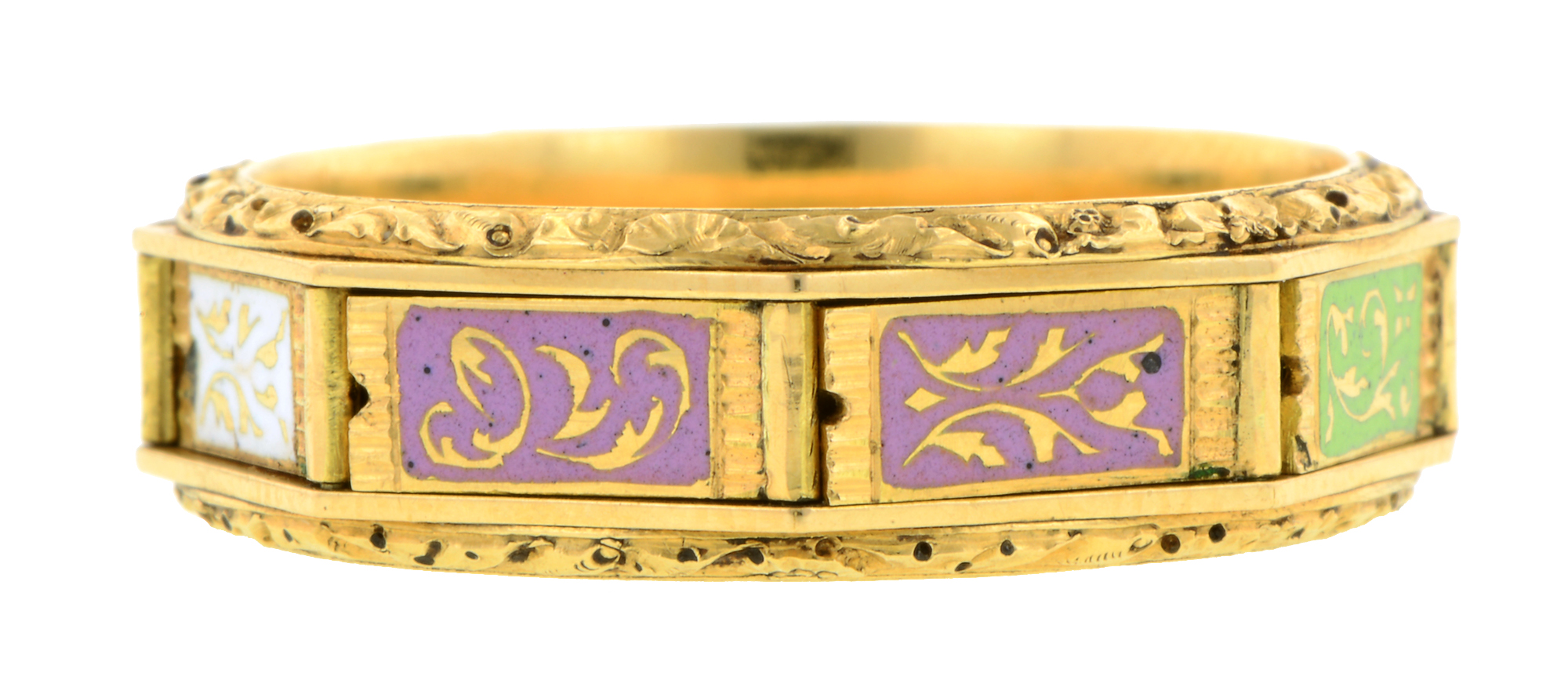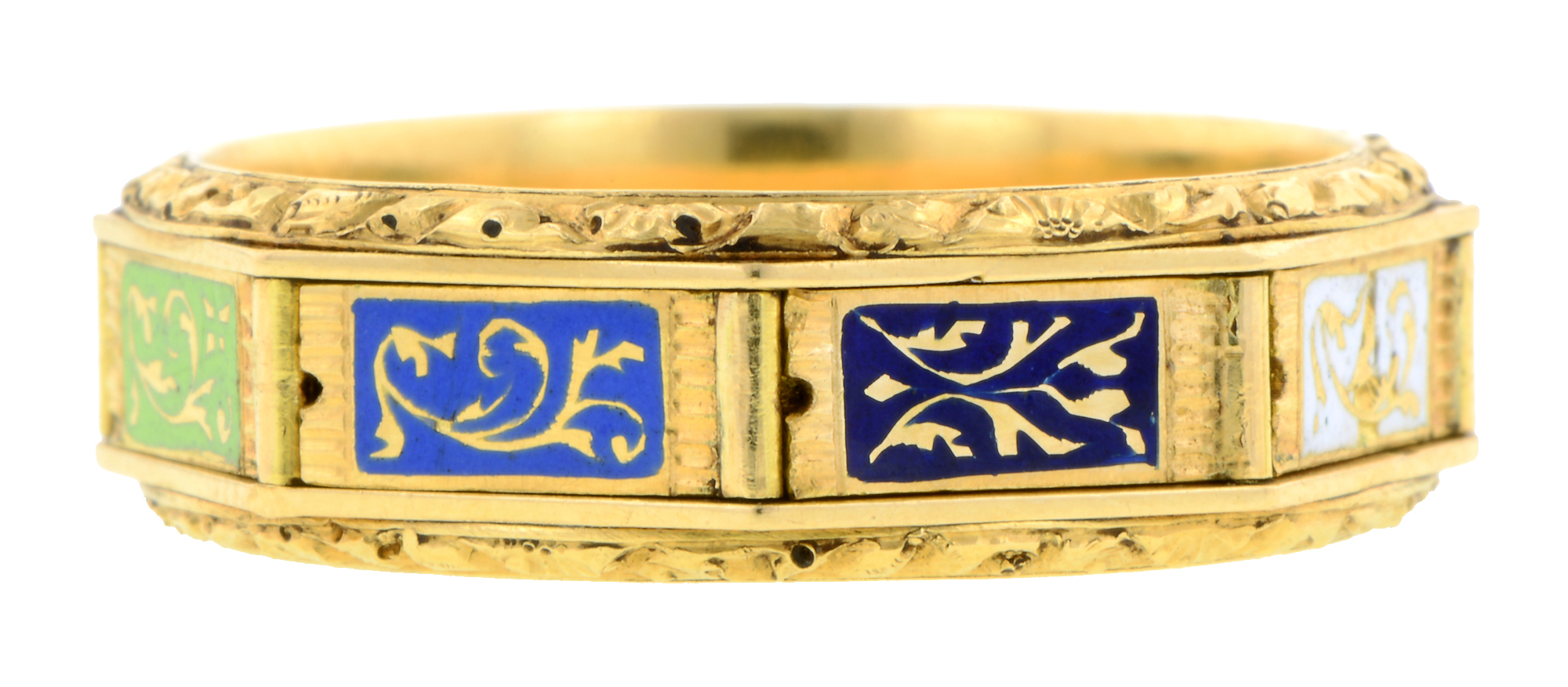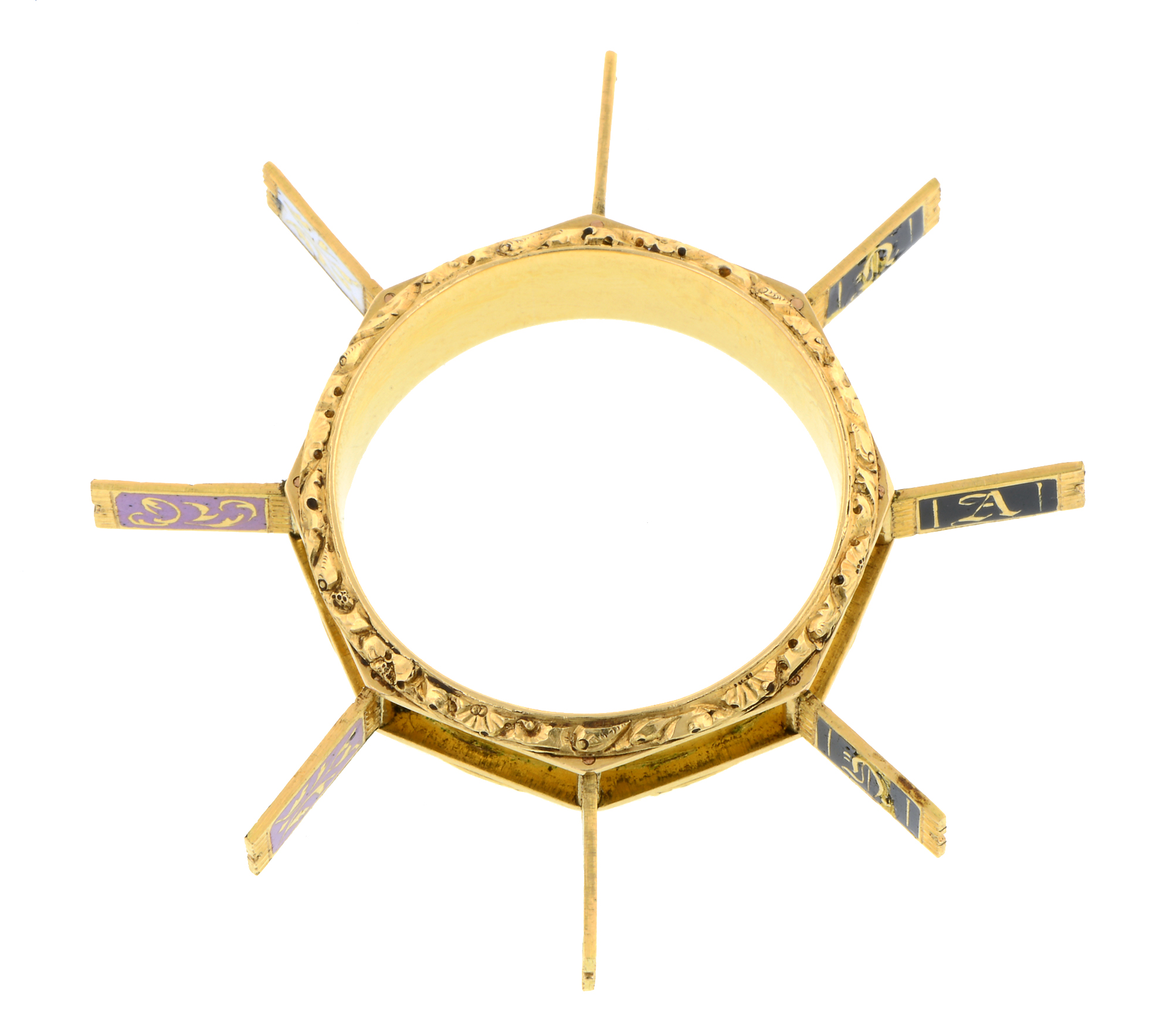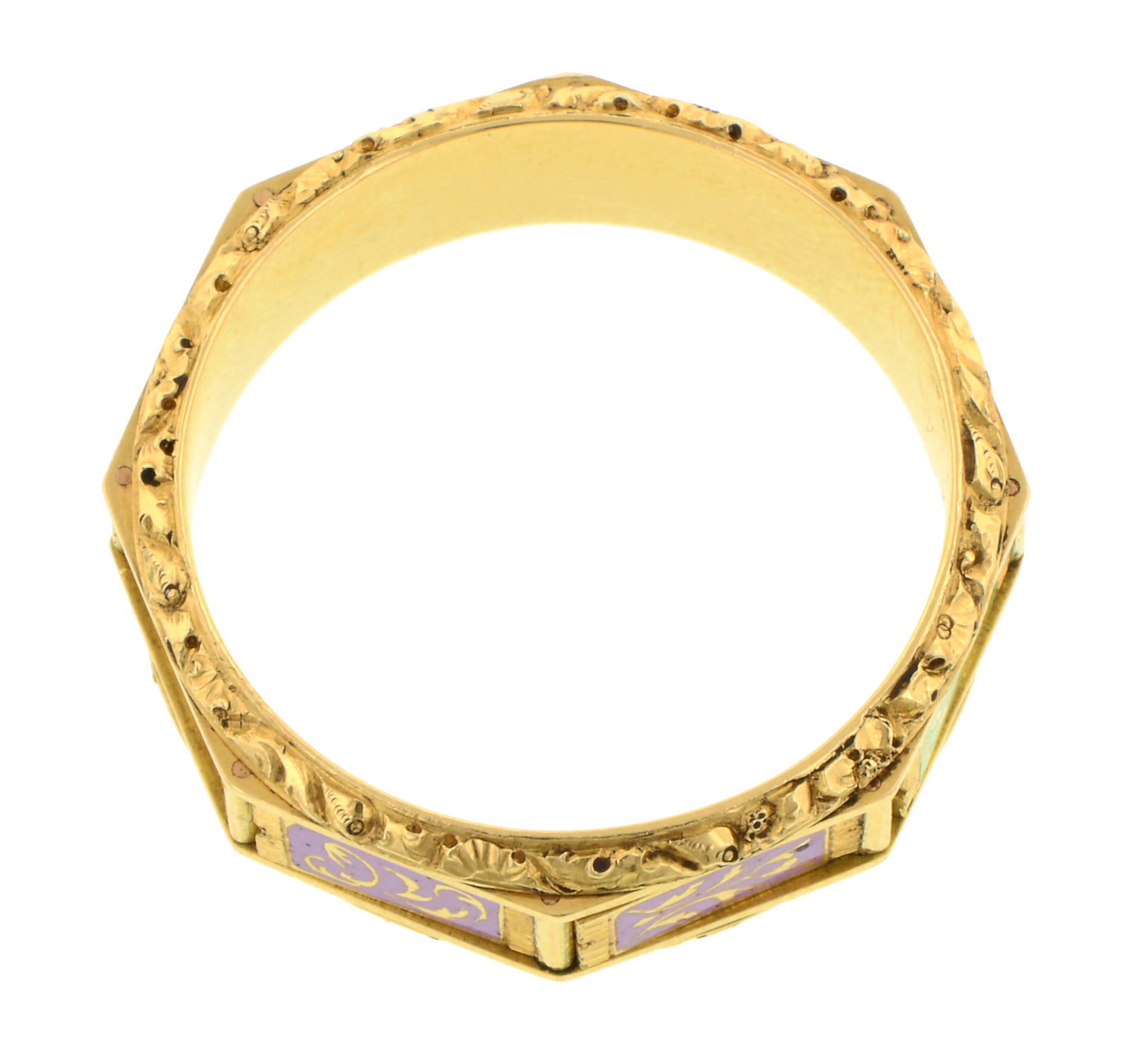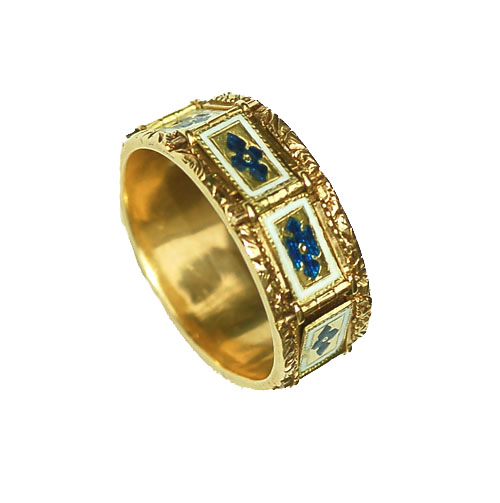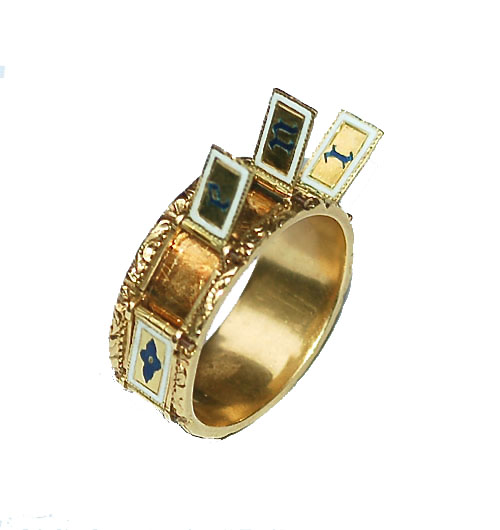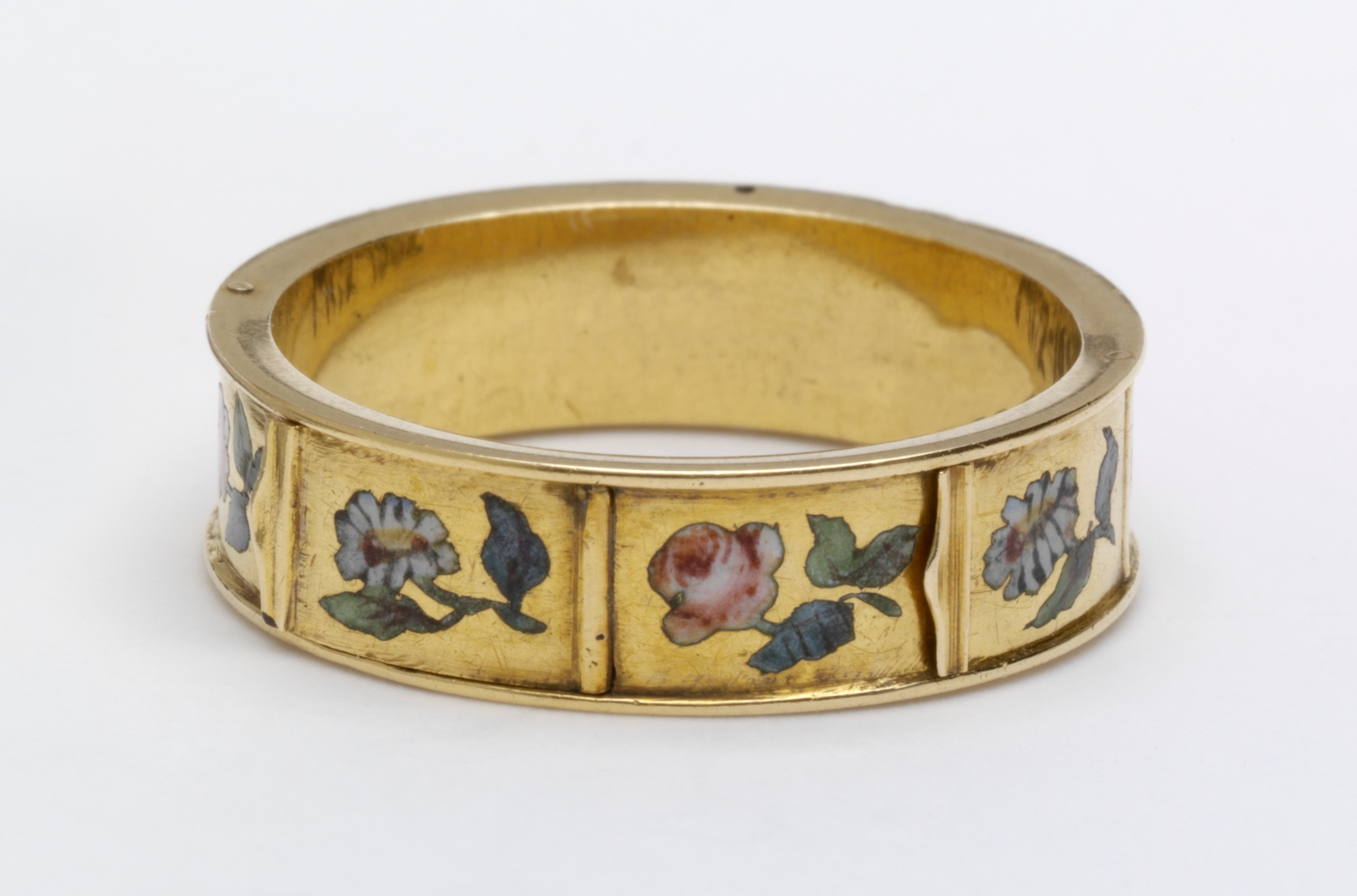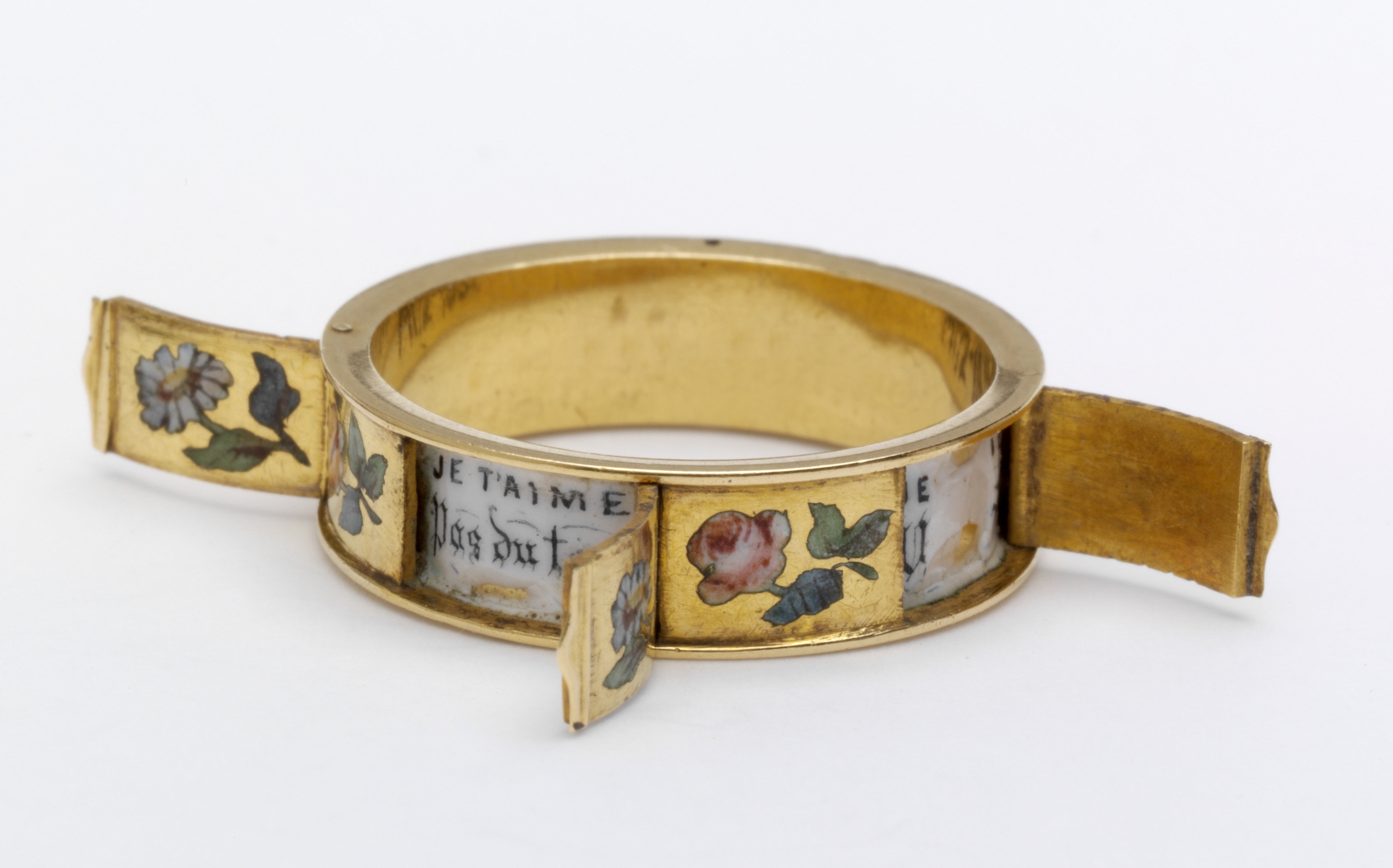BANDING TOGETHER OVER HISTORY: THE ENAMEL COMPARTMENT RING
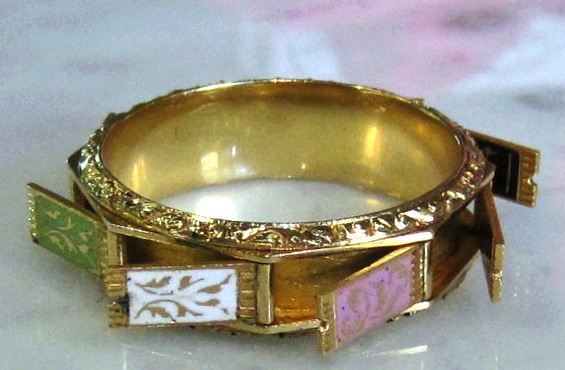
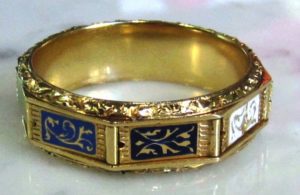
Elizabeth Doyle’s ring closed on the floral enamel side
What happens when you are an antique shop owner and find a similar piece to one of your top 10 favorite historical pieces of all time–one that you have been visiting in a museum’s permanent collection and that you have been going back to see again and again on the museum’s website?
Elation! Joy! Disbelief! As an antique connoisseur, you allow the emotions to settle and then start on your research of the piece. You look into similar pieces and for clues as to provenance. You ask for the advice of historians who will look, loupe, examine and explore with you.
This is exactly what Elizabeth Doyle (co-owner with her sister Pamela of Doyle & Doyle) did when she purchased a ring that dates to approximately 1830 with compartments, which feature enameled flowers on one side, each of which gently flip open to reveal black enameled letters on the other side. The band is designed with a mechanism that allows you to wear the ring with either the pastel floral or the monogrammed panels showing.
- Elizabeth Doyle’s Enameled hinged panel compartment ring, circa 1830
Most antique dealers and shop owners feel that they are the guardians of pieces until they pass them on to their next owners and try to never allow themselves to get too attached to a jewel, but when they come upon an extremely rare find—it goes straight into their personal collection. And, as for Elizabeth? “I am getting so many inquiries about this ring. It started the minute I posted it on Instagram—I was sharing my find rather than trying to sell it but the calls, DMs and emails continue to grow.” Elizabeth explains. I am of course keeping it,” she smiles.
Admittedly I was one of those calls, even though I saw it in the shop with one of Elizabeth’s sales associates before it went up on Instagram. I too have seen only very few examples of this type of ring, and like Elizabeth, my favorite of them resides in the V&A Museum. The others I have seen include one from London-based dealer, Rowan and Rowan’s website, which sold a long while ago (also a true gem). I have seen a few others in antique jewelry books.
I shared in Elizabeth’s excitement when she explained, “It was a dream come true. I had been searching for a ring like this for so many years, and then a friend who was traveling in England and antiquing, came upon this one and immediately sent photos and prices. It didn’t take two beats before I said, ‘I’ll take it.’” She continues. “It’s a size 12, obviously a man’s ring as is the one that Rowan and Rowan sold, which was a size 10 ¼. If ever I was to wear it, or to consider one day in the distant future selling it, it would need to be worn on a chain.” Elizabeth adds. We both agree that even in the correct size, a ring so exceptional should be worn on a chain. It is less likely for the enameling chip or crack around your neck then around your finger.
Elizabeth has found certain details about her ring and describes it as such
‘Antique Enamel Band Ring With Hidden Compartments: measuring app. 7.2mm wide with eight colored enamel compartments, including white, green, light blue, dark blue and lavender – which when opened reveal a series of letters or initials on the reverse with black enamel backgrounds, fashioned in 18K gold. Evidence of French bigorne counter-strike. Circa 1830. Size 12. This ring cannot be sized. Although vitreous enamel forms a hard, durable surface, it is susceptible to chipping and breaking upon impact. There is some loss to the existing enamel. A similar ring is part of the V&A collection and one previously owned by Rowan & Rowan.’
“The mystery as to the eight letters still goes unsolved, we believe they read: KENANDEN,” she says.
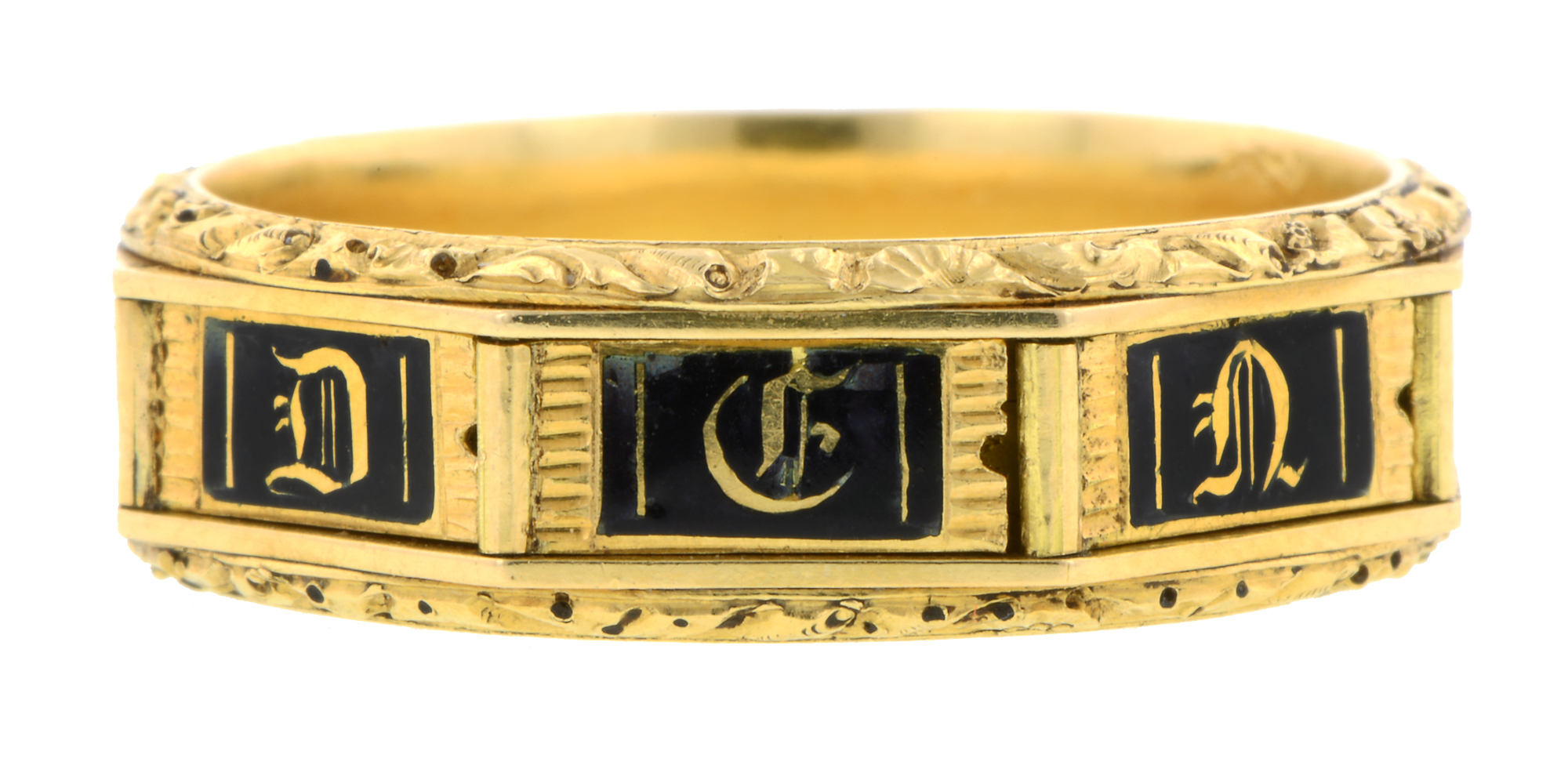
Elizabeth’s ring with the panels flipped over to show the letters or initials
When Michelle Rowan of Rowan & Rowan described her ring on her website the letters were easy to decipher as they spelled out ‘souvenir’. Her description read:
“Rare high carat gold souvenir d’amitie ring, circa 1830, a token of love and friendship. Within a gold chased border, a series of eight locket compartments are enamelled with forget-me-nots and each opens to reveal a single letter, forming the word souvenir. The ring is size U [US 10 and 1/4] and the band is 1/3 of an inch wide. It has remarkably survived in immaculate condition. For similar, see Koch Collection No. 1476.”
- Rowan & Rowan sold Souvenir panel ring
- Rowan & Rowne ring with panels open to show the reverse side with the letters which will spell souvenir
“Doesn’t the history of the type of pieces just push you to want to study, investigate and delve into finding out the entire story? ” Elizabeth asks.
We go back to the V&A Museum’s website to view the similarly designed ring in the permanent collection again.
It is accompanied by this description and due to the subject matter, we believe it to have been created for a woman.
“Enamelled with roses and daisies, this ring was a charming lover’s gift. The little hinged panels set around the hoop open to reveal the French inscriptions: ‘I love you a little, a lot, passionately and not at all’, based on a game played by plucking the petals from a daisy.”
- © Victoria and Albert Museum, London
- © Victoria and Albert Museum, London part of the V&A Jewellery Gallery
I personally own a pendant with the same inscription with an enameled hand holding petals and the daisy motif missing those that were picked off. It was a game I played often as a young girl, and I am particularly enamored by this ring, which is so intricately designed. Elizabeth and I tried to figure out how many times each of us actually visited this ring on the website and in the museum. It is also featured in Rachel Church’s book, Rings, which was published by V&A Publishing in 2011.
The ring was gifted to the museum by Dame Joan Evans and the description continues on with “gold ring, enamelled with sprigs. A small hinged lid around the circumference conceals amatory mottoes beginning ‘JE T’AIME’, France,1830-60.”
Hinged panels was also used by the Parisian jeweller Jean Baptiste Fossin (1786-1848) who created a ring for the Duchesse de Fitz-James combining lockets of hair under panels bearing the initials of her six children is also included in the description for context of the museums’ example.
Elizabeth asks me if I think her ring might be the initials of the ring owner’s eight children? While she continues to try and uncover the mystery—I will now add a photo of her glorious ring into my rotation of jewels that I lust after and visit. But to view this ring, I can just hop a subway and see it in person in twenty minutes or less and this is one that I can actual hold in my hands.
A bit of additional history from the V&A offers that there is a similar ring in the Musee des Arts Decoratifs, Paris, which has hallmarks of 1828. Historic Rings by Diana Scarisbrick illustrates a similar ring which bearsmourning rather than love inscriptions.

